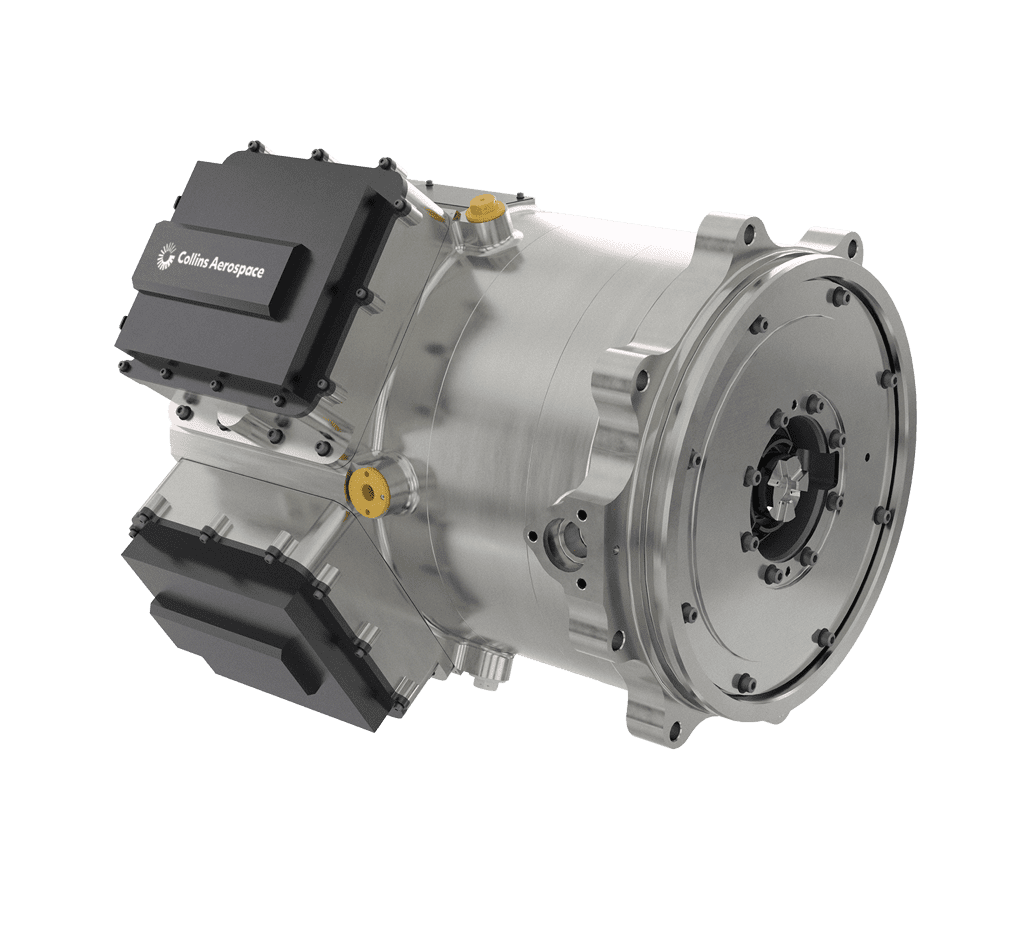
Collins Aerospace 1MW motor angle
Pratt & Whitney and Collins Aerospace intend to enter the market for electric propulsion systems for Urban Air Mobility (UAM) vehicles. The two companies, both part of Raytheon, have launched a technology demonstrator project for a 1 MW electric motor, they announced today ahead of the 2022 Farnborough Airshow. P&W and Collins vying to enter UAM market with electric motor.
Called the Scalable Turboelectric Powertrain Technology or STEP-Tech, the demonstrator is the latest in the hybrid-electric technology programs of both companies. It will be a modular, high voltage distributed turboelectric hybrid-electric propulsion concept in the 100-500 kW class, but will have the potential to scale to 1 MW and beyond. Because of its modular design, STEP-Tech can be tested in various configurations.
The demonstrator has already passed the proof of concepts phase and should start the first ground tests in late 2022 at Raytheon’s Technology Research Center in East Hartford. In a media statement, Raytheon says: “The STEP-Tech demonstrator platform will include full end-to-end system capabilities, including a high-efficiency turbogenerator, energy storage, power electronics, and modular electrically driven propulsors.”
“Successfully demonstrated technology could be implemented in a range of novel aircraft applications, including high-speed eVTOL, Unmanned Aerial Vehicles (UAVs), and small to medium-sized commercial air transporters.”
Design of 1 MW electric motor completed
In related news, Collins announced today that it has completed the Preliminary Design Review of the 1 MW electric motor and controller that is being developed for Pratt & Whitney Canada as part of the regional hybrid-electric flight demonstrator program. The program was announced a year ago. This motor will enter ground tests later this year too, with more tests planned at The Grid electric power systems lab in Rockford (Illinois). Flight tests are planned from 2024 onwards on a De Havilland Canada Dash 8-100 flying testbed out of Montreal.
The aircraft will use batteries supplied by H55 and will be fitted with a 1 MW version of the electric motor on the starboard side. The motor will offer extra power on take-off and climb, while the turboprop engine will be used only during cruise. The turboprop will be compatible with 100 percent sustainable aviation fuel (SAF). Together with the electric motor, the Dash 8-100 test bed should demonstrate a thirty percent reduction in fuel burn and carbon emissions.
GTF Advantage
In a separate update, P&W said today that the Geared Turbofan Advantage has started FAR 33 certification testing. The Advantage is the updated and uprated version of the GTF that was launched in December for the Airbus A320neo family, specifically for the A321XLR. It offers 34.000 pounds of thrust and better (fuel) efficiency.
Pratt says the engine so far has done 2.000 hours on the testbed at Mirabel in Canada but will be going through extensive endurance tests. These will also include the use of 100 percent sustainable aviation fuels, for which the Advantage will be certified from day 1. Entry into service is planned in 2024, when Airbus hopes to certify the XLR.
Views: 15




